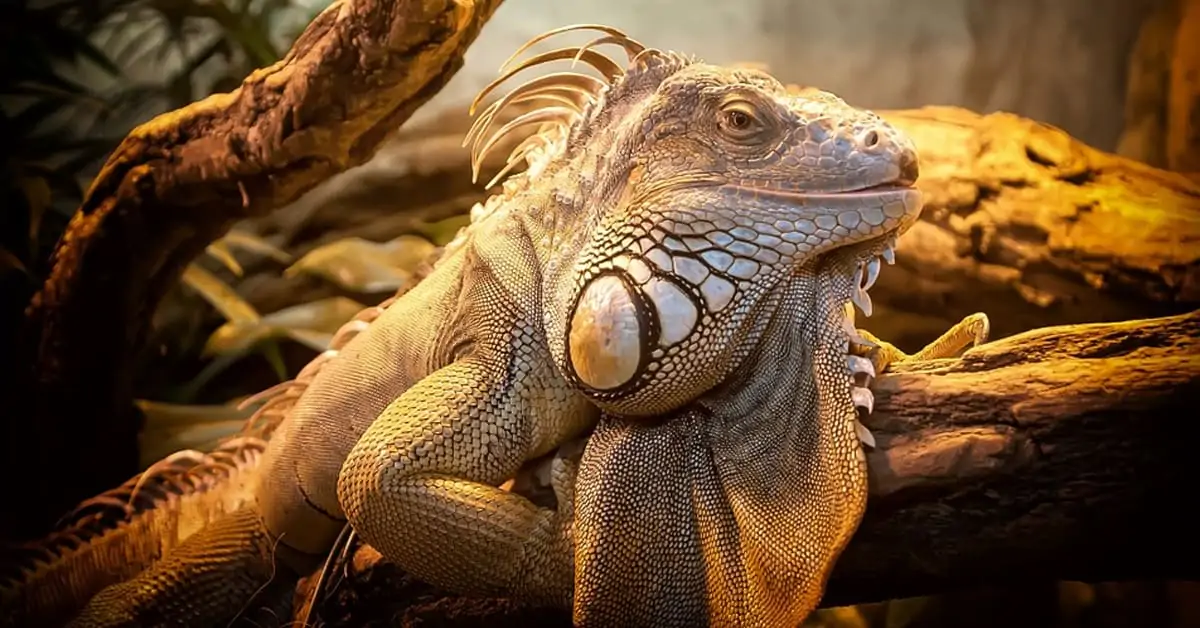Traveling long distances with a lizard can seem like a daunting task. But with proper preparation, transportation methods, and techniques, the journey can be a breeze.
When travelling long distances with a lizard, first make sure their enclosure is spacious, has optimum temperatures, and is padded against sudden movements. Moreover, get the lizard checked out by the vet before the trip. Finally, examine local laws at your destination to ensure all is in order with your pet.
Traveling with a warm-blood pet has its challenges. Factor in a cold-blooded pet, and it can get more challenging. Fortunately, you can incorporate a few things to ensure safe travel with your lizard; read on for more details.
How Should You Transport a Lizard?
You should transport a lizard using its usual cage or invest in a transporting carrier. Carriers and cages allow you to adjust the heating or cooling needs of your pets. Besides, you can place blankets and towels to offer your lizard comfortable cushioning and bedding.
How To Travel Long Distance with a Lizard?

Here’s how to travel long distances with a lizard safely and comfortably:
Pay A Visit to Your Vet
At least ten days before the move, take the reptile to a vet to retrieve medical records and a signed health certificate. Some places may require you to present these documents before allowing your lizard across its borders. The visit can also be an excellent way of enquiring how to keep your pet healthy and happy during the move.
Pick A Transporting Carrier
You can transport your lizard in its usual cage with added blankets and towels for extra cushioning. Alternatively, you could buy a friendly transporting carrier. The transporting carrier should be durable and preferably lined with foam panels cut to fit the container for added safety.
It’s also advisable to allow the lizard to spend a couple of hours each day in the carrier days before they travel. That way, your lizard will get accustomed to the carrier and won’t be frightened when you put them inside on moving day.
Moreover, you should ensure that it’s the right size and type of pet carrier to transport your lizard in. It needs to be well-ventilated and spacious enough for the lizard to move but not too large to prevent the pet from being hurled around.
Maintain The Optimum Temperature in The Carrier
Lizards are ectothermic, and hence their body temperature relies on external sources like sunlight. Therefore, keeping them in the correct temperatures makes the lizard comfortable and ensures proper digestion (which without could cause them to become sick).
So, if you’re traveling to cold areas, you can place something warm underneath the blankets or towels to keep your lizard warm and cozy. Things you can use include hand warmers, towel-wrapped hot water bottles, or simply fill a tube sock with uncooked rice and microwave it just before you start the trip. Conversely, if you’re travelling to warm areas, ensure the cage is cool by adding wet towels and blankets.
Label The Carrier or Cage
If you’re traveling by air, mark the box or carrier on all sides with your contact information and handling instructions such as THIS SIDE UP or LIVE ANIMAL. This ensures your pet is handled appropriately. You could also indicate the type of reptile in the carrier, their feeding routine, optimum temperatures, and special medical needs, if any.
“Packing” Your Lizard for Travel
On travel day, it’s advisable to put your lizard in a spacious, breathable cloth bag, tie the top with strong rubber bands or twine, fold over the tied-off section and overwrap with duct or masking tape. That will make it impossible for your pet to escape in its panic.
Then place the bagged lizard in the carrier (as described above). You can add some crumpled paper in the remaining empty spaces to offer extra cushioning. First, however, ensure there’s sufficient air circulation in the bag and carrier.
Monitor Your Pet During the Travel

During the travel, place the cage in a safe zone that minimizes movement in the event of an accident. Also, monitor your pet continuously to ensure they’re safe, secure, and have the appropriate temperature.
It’s also recommended that you adhere to your pet’s usual routine before, during, and after long-distance travel. This can help minimize travel-related stress your lizard might experience. It’s also advised that you bring some extra pet food and water in case of delays.
Keep Stops to A Minimum
It’s vital to reduce any possible stressors or complications that result from being out of the lizard’s habitat. So, if you’re travelling by car, avoid sudden braking, accelerating too quickly, or sharp turns as they can cause the lizard to be tossed around or out the cage or carrier.
Moreover, the sooner you get the lizard to your destination and back to its regular schedule, the better for its mental and physical health. Hence, it would help if you minimized stops along the journey. Also, remove the pet from the cage and get them in their habitat immediately after arriving at your destination.
Important Note: If you need to stay somewhere overnight, plan and choose lodging that allows lizards.
How Do I Move Internationally with Reptiles?
You should check the country’s regulations about reptiles. For example, some countries don’t allow specific breeds to cross into their region. Others might require you to have special registration and license to import your reptile. Being well-acquainted with such regulations can help you in the preparation process.
Moreover, you might consider transporting your reptile by air when moving internationally as they won’t have to spend long hours on the road. However, it might be expensive and require much more paperwork to fill. Also, some airlines don’t allow reptile pets in their planes.
You’ll need to place your reptile friend in a specially approved carrier based on their species and needs. Besides, you’ll have to attach the necessary medical certificates to move your friend to another country hassle-free.

